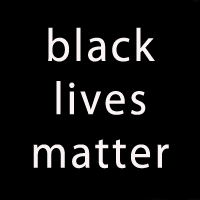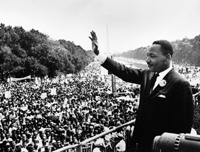News & Commentary
Blurring Lines: Police Militarization and the RNC
Photo by Raymond Wambsgans through Flickr Creative Commons.

How Do We Know if Police Are Obeying the Law?
For years, the story has been the same. Its plot involves unnecessary stops, disproportionate responses, and inexcusable use-of-force. People of color in Cleveland, and cities like it across the country, have become intimately familiar with this narrative. Police enforce the law in different ways depending on who they are policing. And how does this story usually end? With silence from city officials, or maybe a settlement with no admission of wrongdoing. In response to persistent attempts to discredit their experiences, activists and leaders in the black community have pushed for new tools to change how people in power hear their stories. A Similar Story Where Police Collect Data Recently, the court-appointed monitor released a first-year plan for implementing the agreement between the City of Cleveland and the U.S. Justice Department to reform police practices. Several major points in the plan deal with the use of force by officers, and how these incidents are reported. This reporting has the ability to take a disturbingly common story of police misconduct and package it in a way that skeptics cannot ignore. In places where better data collection policies have been implemented, a similar story about inequities in law enforcement emerges. In Florida, a 2005 law began requiring police departments to report the race of people who received seat belt tickets. These numbers revealed massive racial disparities—black people are ticketed for not wearing seat belts anywhere from twice to four times as often as their white counterparts.
By Nathan Cindrich

Black Children are Children: Tamir Rice and the Adultification of Black Bodies
Many would like to quickly move forward now that a grand jury has decided not to indict the Cleveland police officers involved in the tragic death of Tamir Rice, the 12 year old child who was shot in less than one second while playing in a park. But we cannot move past the death of Tamir. Instead, we should focus on understanding how the young boy was perceived before he was killed, how he was characterized post-mortem, and the history that allows that negative characterization to prevail today. Age of Justification Following the death of Tamir Rice, much attention was paid to his size. The Cleveland Police Patrolmen Association president said “Tamir Rice is in the wrong. He’s menacing. He’s 5-feet-7, 191 pounds. He wasn’t that little kid you’re seeing in pictures. He’s a 12-year-old in an adult body.” After the decision not to indict the officers was reached, the prosecutor commented that Tamir’s size made him appear much older for his age. The fixation on the size of black bodies dates back to America’s days of slave auctions, where size was exploited for value and profit. Adultification and attempts to justify physical attacks against black children in America is not new either. In fact, being young did not protect Black children from being lynched in America. From the late 1800s to 1950s Black boys and girls as young as 8 years of age were hanged to their deaths from trees. One such child was 14 year old Emmitt Till, killed in 1955.

Stay Informed
Sign up to be the first to hear about how to take action.
By completing this form, I agree to receive occasional emails per the terms of the ACLU’s privacy statement.
By completing this form, I agree to receive occasional emails per the terms of the ACLU’s privacy statement.





